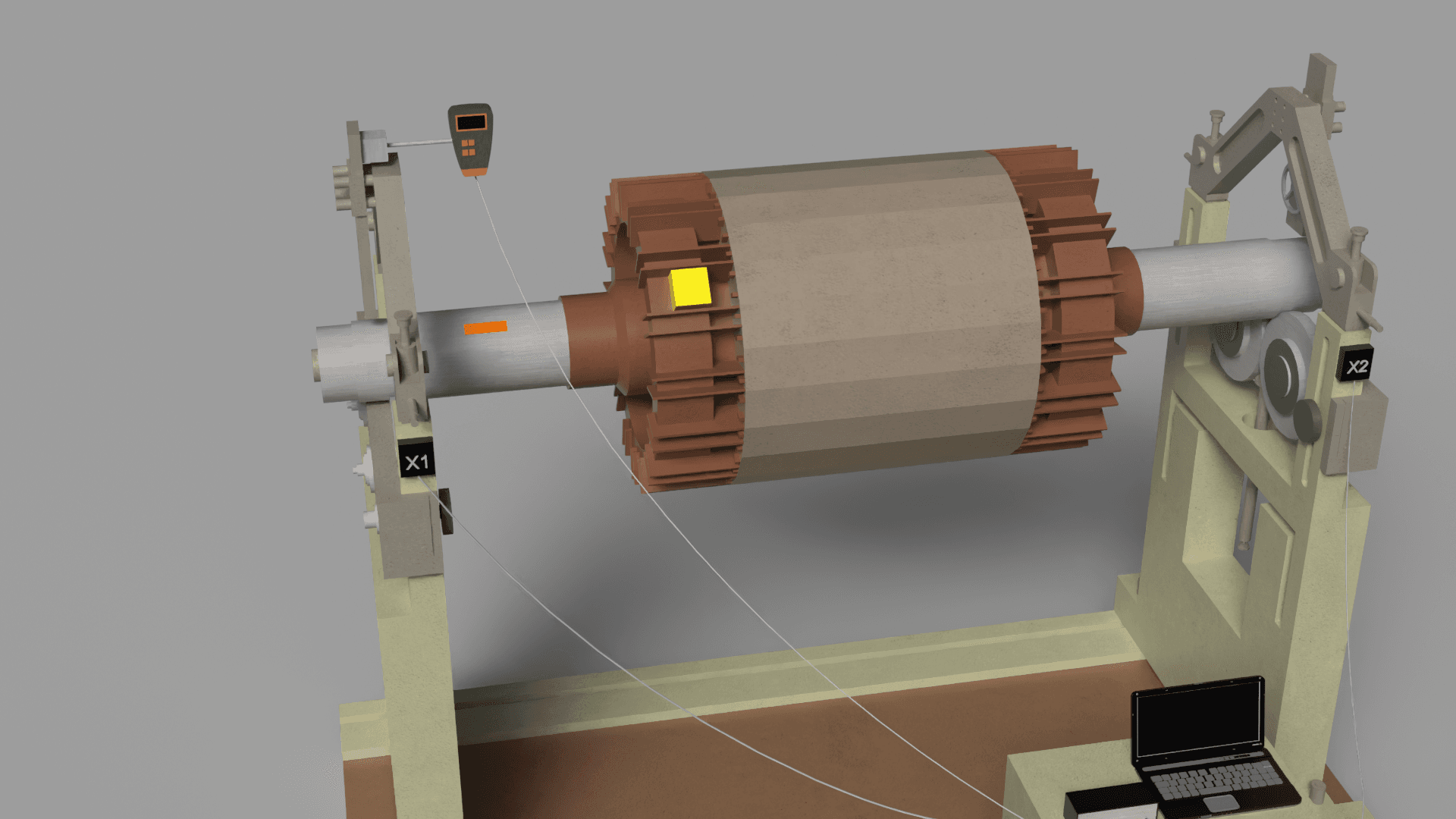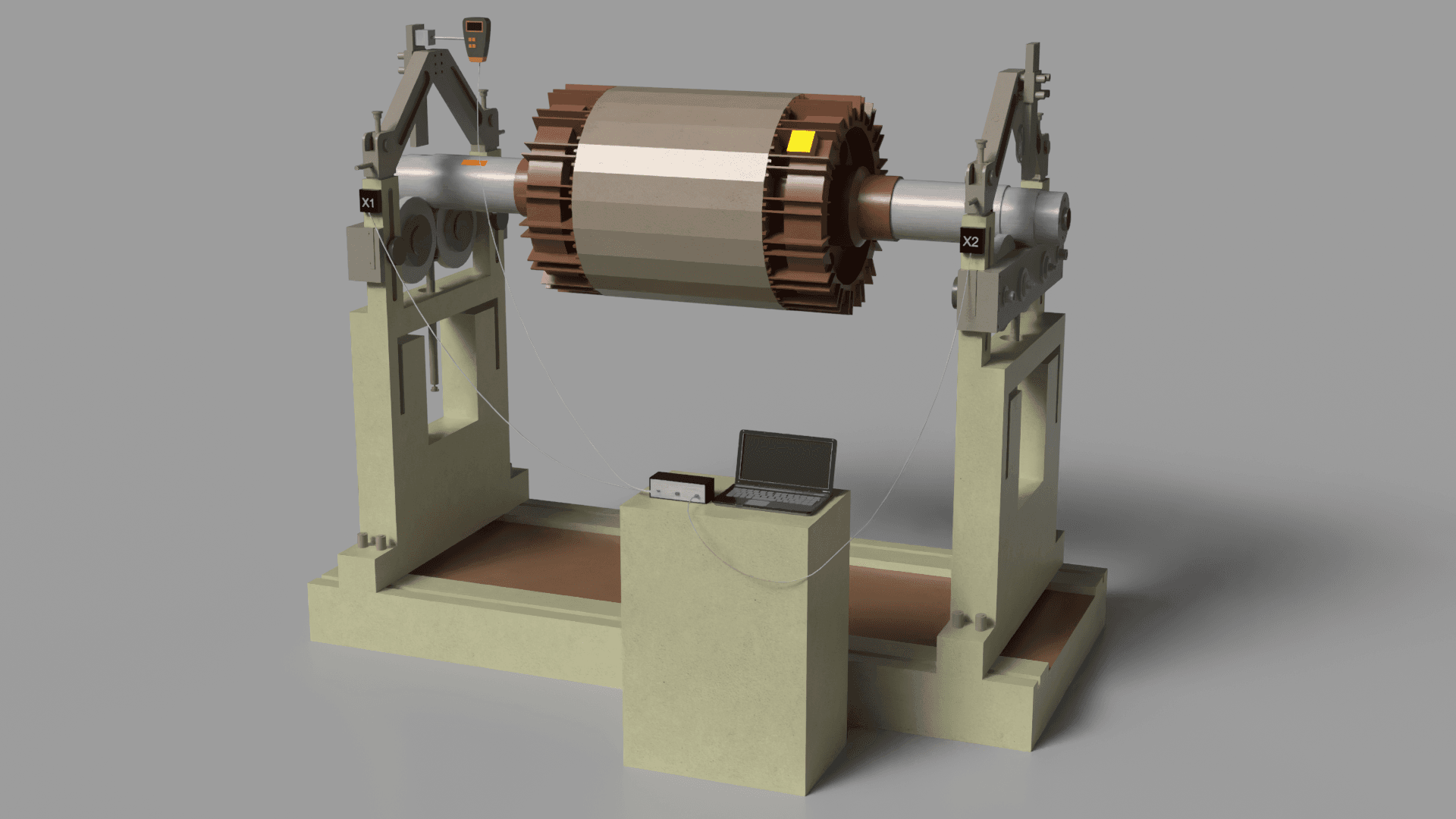Rotor balancing
페이지 정보
작성자 EQiblykat
작성일25-02-10 19:47
제 목Rotor balancing
휴대폰
상 태 ????
본문
Using the Balanset-1A Instrument
Getting the Equipment Ready
- Ensure the instrument is complete with all necessary components: vibration transducers, laser tachometer, magnetic stand, software, and other accessories.
- Connect the device to your PC using the USB interface and confirm the software installation.
Setting Up the Sensors
- Mount the vibration transducers securely on the machine's housing where vibrations are most pronounced, typically near the bearings.
- Aim the optical rpm sensor at the rotating shaft and apply a reflective strip to the shaft for phase angle data acquisition.
Launching the Software
- Launch the Balanset software on your computer.
- Configure the software for either single-plane or two-plane balancing, based on the rotor's characteristics and the desired outcome.
Initial Vibration Measurement

- Run the rotor up to its operating speed.
- The program will record the vibration amplitude, rpm, and phase, providing a baseline measurement of the existing imbalance.
Mounting the Test Weight

- Halt the rotation and mount a test weight at a designated position on the rotor, with the weight's value entered into the software (usually in grams).
- Run the rotor again, allowing the software to measure the effects of the trial weight on vibration and phase.

Determining the Corrective Mass
- The software uses the measured values to automatically compute the necessary compensating weight's magnitude and placement angle.
- The results of the calculation are shown both numerically and visually through charts and graphs.

Mounting the Compensating Weight
- Install the correction weight on the rotor according to the software's calculations.
- If necessary, perform intermediate checks to verify that the imbalance is being reduced.

Final Check and Balance Confirmation
- After installing the correction weight, run the rotor again and check the residual vibration level.
- The balancing procedure is finished if the remaining vibration is within the permissible limits specified in ISO 1940.
- Should the vibration still be excessive, repeat the balancing steps, making further adjustments to the corrective weight as needed.
Generating a Documentation of the Balancing Results
- All balancing results are logged and archived within the software, from which you can produce a printable report summarizing the vibration levels, compensating weight, and its installation position.
Post-Balancing Checklist
- Verify the secure attachment of all balancing weights and measurement sensors.
- Ensure the rotor rotates smoothly and without excessive noise.
- If the rotor operates within a larger assembly, check the functionality and interplay of all interconnected parts.
Instagram: https://www.instagram.com/vibromera_ou/ Youtube : https://youtu.be/guA6XJ-ArZM?si=vmkuX7RILzKBl0zL Our website about Rotor balancing Machinio: https://www.machinio.com/listings/98380186-portable-balancer-vibration-analyzer-balanset-1a-full-kit-in-portugal Facebook: https://www.facebook.com/marketplace/item/350151228150722 https://codybrgu14814.mappywiki.com/612714/balanset_revolutionizing_dynamic_balancing
댓글목록
등록된 댓글이 없습니다.







































 . All Rights Reserved.
. All Rights Reserved.

